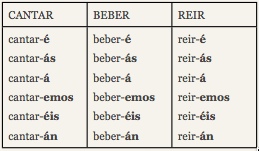In Spanish, when we want to talk about the future we use the “futuro imperfecto de indicativo” or Futuro Simple.
FORM
The future is form adding the endings (-é, -ás, -á, -emos, -éis, -án) to the infinitive form of the verb. Same endings for the 3 conjugations. Like in the example:
There are few irregular verbs in the future tense. The irregularities are in the radical but the endings don’t change. Here you have a list of the irregular verbs:
tener > tendr-
salir > sald-
haber > habr-
poner > podr-
venir > vendr-
hacer > har- + -é, -ás, -á, -emos, -éis, -án
decir > dir-
querer > querr-
saber > sabr-
caber > cabr-
USE
- We use the future tense to talk about future actions. It is normally accompanied with temporal markers like: “mañana”, “luego”, “después”…
Example
La semana que viene iré a Sevilla de vacaciones.
Next week I will go to Sevilla on holidays.
- We also use the future to express probability about the present.
Example
¿Qué hora es? No sé, serán las dos…
What time is it? I don’t know, it will be two…
- We use the future to make hypotheses.
Ana is late, she will be on her way.




Pingback: The Conditional tense and how to make hypothesis | Online Spanish Tutor
lovely web page¡¡¡ Mucha suerte, María.